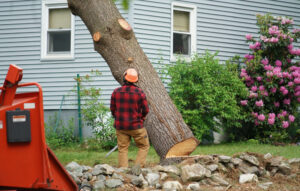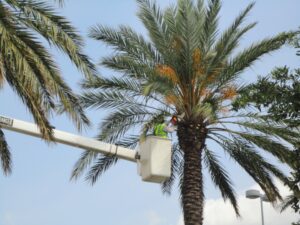Tree Removal in the United States: Laws, Permits, Application & Cost
When it comes to removing trees from your property in the United States, you can’t simply grab a chainsaw and get to work. Tree removal is regulated by a complex web of federal, state, and local laws designed to protect the environment, preserve valuable tree species, and ensure public safety. Whether you’re clearing land for development, addressing hazardous trees, or simply redesigning your landscape, understanding the legal requirements and costs associated with tree removal is essential.
This comprehensive guide will walk you through everything you need to know about tree removal in the United States, from the laws governing the process to obtaining permits, completing applications, and budgeting for expenses.
Understanding Tree Removal Laws in the United States
Federal Regulations
At the federal level, several laws may impact your ability to remove trees, especially if your property contains protected species or is located in environmentally sensitive areas.
The Endangered Species Act (ESA) prohibits the removal of trees that serve as habitat for threatened or endangered species. Before removing any trees, you should ensure that they don’t provide habitat for protected wildlife. The U.S. Fish and Wildlife Service maintains a database of endangered species by state that you can consult at https://www.fws.gov/endangered/.
Additionally, if your property contains wetlands, the Clean Water Act may require permits from the U.S. Army Corps of Engineers before any trees can be removed. Wetlands play a crucial role in flood control, water filtration, and wildlife habitat, so they receive special protection under federal law.
For properties in National Forests or other federally managed lands, the U.S. Forest Service or Bureau of Land Management establishes specific guidelines for tree removal. These agencies prioritize forest health, fire prevention, and sustainable resource management in their permitting decisions.
State-Level Regulations
State laws regarding tree removal vary widely across the country. Some states have comprehensive forest practices acts that regulate tree cutting on private lands, while others delegate most regulatory authority to local governments.
States like California, Oregon, and Washington have robust forest practice regulations that may require permits for removing trees even on private property, particularly if the removal is part of a commercial timber harvest or could impact watersheds. California’s Oak Woodlands Conservation Act specifically protects native oak trees and requires mitigation for their removal.
In contrast, states like Texas and Arizona have fewer statewide restrictions on tree removal, though they may regulate specific protected species or trees in environmentally sensitive areas. Texas, for example, protects native pecan trees on public rights-of-way through its Agriculture Code.
States in the Northeast, including New York, Massachusetts, and Vermont, often have strict regulations to protect their valuable hardwood forests and prevent destructive logging practices. These states may require management plans for larger-scale tree removal activities.
Local Ordinances
While federal and state laws establish the framework for tree protection, local ordinances often impose the most direct restrictions on property owners. Cities and counties across the United States have enacted tree protection ordinances that require permits for removing trees of certain sizes or species.
Municipal tree ordinances typically address:
- Tree size thresholds for permit requirements (often based on trunk diameter)
- Protected species that require special permission to remove
- Heritage or landmark trees that receive additional protection
- Requirements for replacing removed trees
- Special protections for trees in designated conservation areas
- Restrictions during nesting seasons for migratory birds
- Penalties for unauthorized tree removal
These ordinances can be surprisingly strict. In Atlanta, Georgia, for example, the tree protection ordinance requires permits for removing any tree with a diameter of 6 inches or greater. Similarly, Austin, Texas protects its heritage trees (24 inches in diameter or larger) with steep fines for unauthorized removal.
Many communities have created urban forestry departments specifically tasked with administering tree ordinances and maintaining the urban tree canopy. These departments can be valuable resources for understanding local requirements and obtaining necessary permits.
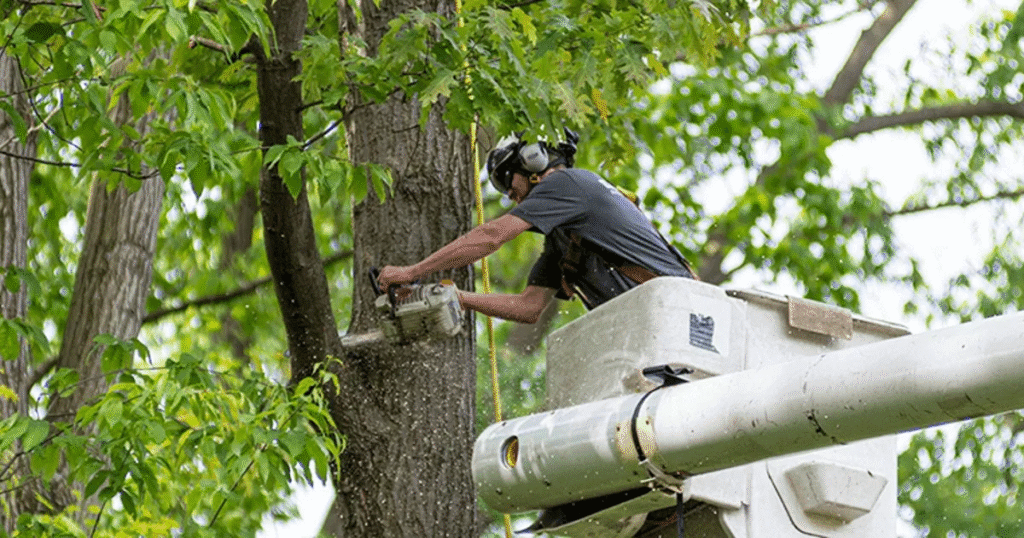
When Do You Need a Tree Removal Permit?
As a property owner, you need to determine whether removing a tree requires permission from governing authorities. While requirements vary by location, you generally need a permit in the following situations:
Size-Based Requirements
Most municipalities establish size thresholds above which permits are required. These thresholds typically range from 4 to 12 inches in trunk diameter, measured at 4.5 feet above ground level (known as “diameter at breast height” or DBH). For example:
- New York City requires permits for trees with a diameter of 6 inches or more
- Chicago requires permits for trees 5 inches or larger in diameter
- Los Angeles requires permits for “protected trees” of certain species that exceed 4 inches in diameter
Multi-trunk trees are often measured differently, with the diameters of all stems added together or the largest stem measured individually, depending on the ordinance.
Species-Based Requirements
Many jurisdictions provide special protection for native, rare, or culturally significant tree species. In California, oak trees receive special protection in many counties. In Florida, mangroves are strictly protected due to their ecological importance. Washington state protects its emblematic Western Red Cedars.
Knowing which species on your property have protected status is crucial before planning any removal. Your local extension office can help identify tree species and provide information about any special protections they may have.
Location-Based Requirements
The location of trees on your property can also determine permit requirements:
- Trees in front yards or street easements often have stricter protection
- Trees along waterways or in riparian zones typically require special permits
- Trees in designated historic districts may have additional preservation requirements
- Trees in environmentally sensitive habitats often have enhanced protection
Even if a tree is entirely on your private property, local ordinances may still regulate its removal if it meets certain criteria for size, species, or location.
Health-Based Exemptions
Many jurisdictions provide exemptions from the standard permitting process for trees that pose an immediate hazard. Trees that are dead, diseased, or structurally unstable may qualify for expedited removal permits or emergency authorizations.
However, most municipalities still require documentation of the hazardous condition, often from a certified arborist, before granting such exemptions. Taking photos and obtaining professional assessments before emergency removal can help you demonstrate compliance with ordinance requirements.
The Permit Application Process
Once you’ve determined that you need a permit to remove a tree, you’ll need to navigate the application process. While this process varies by jurisdiction, it typically involves the following steps:
1. Gather Required Documentation
Most permit applications require:
- Proof of property ownership
- Site plan showing the location of trees to be removed
- Photographs of the trees
- Arborist report (for hazardous trees or in cases where professional assessment is required)
- Tree replacement or mitigation plan
- Application fee
Some jurisdictions may require additional documentation, such as a written statement explaining the reason for removal or evidence that alternatives to removal have been considered.
2. Submit the Application
Applications can typically be submitted online through the municipal website, by mail, or in person at the relevant department. Many cities now offer electronic submission systems that streamline the process.
The typical turnaround time for permit applications ranges from a few days to several weeks, depending on the jurisdiction and the complexity of the request. Planning ahead is essential, especially for non-emergency removals.
3. Site Inspection
After receiving your application, many jurisdictions will dispatch an inspector to your property to verify the information provided and assess the trees in question. The inspector may be a city forester, arborist, or other qualified official who can evaluate the trees and determine if they meet the criteria for removal under local ordinances.
During the inspection, the official will typically:
- Confirm the species and size of the trees
- Evaluate their health and structural condition
- Assess potential impacts of removal on the surrounding environment
- Review your replacement or mitigation plan
4. Public Notice Period
Some jurisdictions require a public notice period before certain tree removals can be approved. This allows neighbors and community members to comment on the proposed removal, particularly for significant or landmark trees.
Notice periods typically range from 5 to 30 days and may involve posting signs on the property, sending letters to adjacent property owners, or publishing notices in local newspapers.
5. Permit Issuance
If your application is approved, you’ll receive a permit specifying the trees that can be removed and any conditions that must be met during and after removal. These conditions often include:
- Time limits for completing the removal
- Requirements for tree replacement or mitigation
- Specifications for protecting remaining trees during removal
- Restrictions on when removal can occur (avoiding nesting seasons, etc.)
- Requirements for stump removal or treatment
Many permits include specific instructions for displaying permit information on site during the removal process.
Understanding Tree Removal Costs
The cost of tree removal varies widely depending on numerous factors, including the tree’s size, location, and condition, as well as regional differences in labor and equipment costs.
Tree Removal Pricing Factors
The primary factors affecting tree removal costs include:
Tree Size: Larger trees require more labor, specialized equipment, and time to remove safely, significantly increasing costs. A small tree (under 30 feet) might cost $150-$500 to remove, while a large tree (over 60 feet) could cost $1,200-$2,000 or more.
Tree Location: Trees near structures, power lines, or in areas with limited access present additional challenges and safety concerns, often resulting in higher removal costs. Difficult-to-access trees may require specialized equipment or techniques.
Tree Condition: Dead, diseased, or structurally compromised trees may be more dangerous to remove, potentially increasing costs. However, these trees are sometimes easier to take down than healthy trees, which could lower costs in some cases.
Additional Services: Stump removal, wood chipping, log splitting, and debris removal typically incur additional charges beyond basic tree removal.
Geographic Location: Labor rates, equipment costs, and regulatory requirements vary significantly by region, affecting the overall cost of tree removal services.
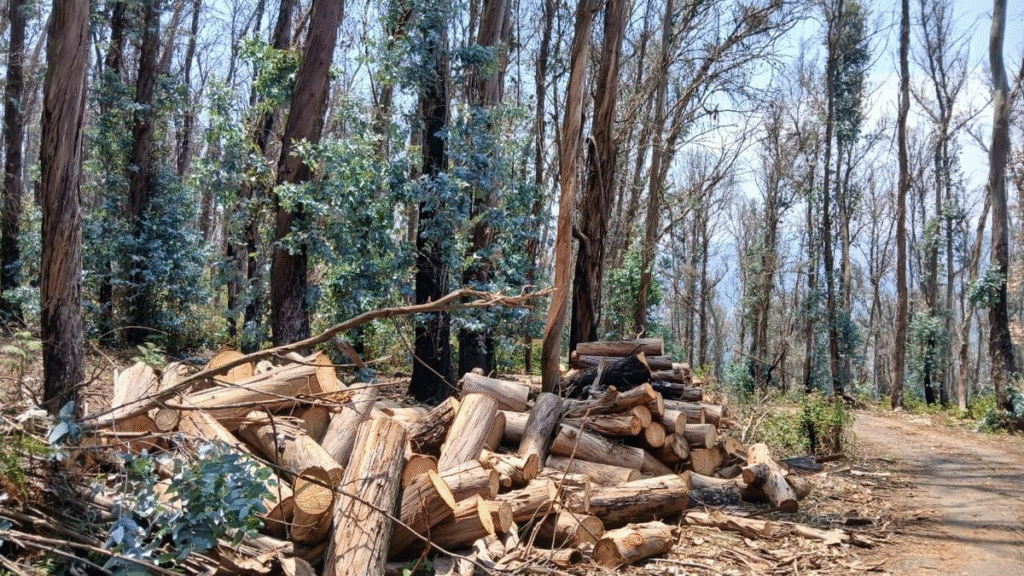
Average Cost of Tree Removal by Size
The following table provides a general overview of tree removal costs based on tree height:
| Tree Height | Average Cost Range | Additional Factors That May Increase Cost |
|---|---|---|
| Small (< 30 ft) | $150 – $500 | Difficult access, proximity to structures, additional services (stump removal, etc.) |
| Medium (30-60 ft) | $450 – $1,200 | Species (hardwoods often cost more), condition, urban vs. rural location |
| Large (60-80 ft) | $800 – $1,800 | Emergency service, hazardous conditions, specialized equipment needs |
| Very Large (80+ ft) | $1,500 – $3,000+ | Complex removals, crane requirements, extensive cleanup needs |
Permit Costs
In addition to the service cost, you’ll need to budget for permit fees, which vary widely by jurisdiction:
- Small residential permits typically range from $25 to $100
- Permits for multiple trees or protected species often cost $100 to $300
- Commercial development permits may cost $500 or more
- Some municipalities charge per-tree fees for removal permits
- Fines for unpermitted removal can range from $500 to $10,000 per tree
Cost-Saving Strategies
To manage tree removal costs effectively:
Get Multiple Quotes: Contact at least three reputable tree service companies for estimates. Ensure each company is properly licensed, insured, and certified by organizations like the International Society of Arboriculture (ISA).
Consider Timing: Winter and early spring are often less busy for tree services, potentially resulting in lower prices. Emergency removals almost always cost more than scheduled work.
Coordinate with Neighbors: If multiple properties in the area need tree work, coordinating with neighbors might allow you to negotiate group rates with service providers.
Look for Municipal Programs: Some cities offer assistance programs for hazardous tree removal, particularly for low-income residents or in cases where trees pose public safety risks.
Ask About Wood Disposal Options: Some companies charge less if they can leave logs or wood chips, which you might be able to use for landscaping or firewood.
Legal Consequences of Unauthorized Tree Removal
Removing trees without required permits can result in significant legal and financial consequences. Many jurisdictions have strengthened penalties for unauthorized tree removal in recent years as the environmental value of mature trees has become more widely recognized.
Fines and Penalties
Penalties for unpermitted tree removal typically include:
- Monetary fines, often calculated based on the size, species, and number of trees removed
- Requirements to replace removed trees, sometimes at ratios of 2:1, 3:1, or higher
- Stop-work orders on development projects
- Required restoration of damaged habitat
- Potential criminal charges for willful violations
In some municipalities, fines are calculated based on the appraised value of the removed trees, which can run into tens of thousands of dollars for mature specimens. For example, Portland, Oregon calculates fines based on the trunk diameter, with penalties of $1,000 per inch for trees 12 inches in diameter or larger.
Tree Replacement Requirements
Many jurisdictions require mitigation for removed trees, even when permits are properly obtained. These requirements typically take one of several forms:
On-site Replacement: Planting new trees on the same property, often at a ratio determined by the size of the trees removed. For example, removing one 30-inch diameter tree might require planting six 2-inch caliper trees.
Payment into Tree Funds: Contributing to municipal tree funds that support planting and maintenance of public trees. These “in-lieu” fees are often calculated based on the size of removed trees or the number of replacement trees required.
Off-site Mitigation: Planting trees at alternate locations or contributing to conservation efforts in designated natural areas.
Neighbor Tree Disputes
Tree disputes between neighbors are common and legally complex. While you generally have the right to trim branches that extend onto your property, removing a tree that straddles a property line typically requires consent from all affected property owners.
In cases where a neighbor’s tree poses a legitimate hazard to your property, most jurisdictions have procedures for addressing these concerns through municipal code enforcement or civil action. Documenting the hazardous condition and attempting to resolve the issue amicably are always recommended before pursuing legal remedies.
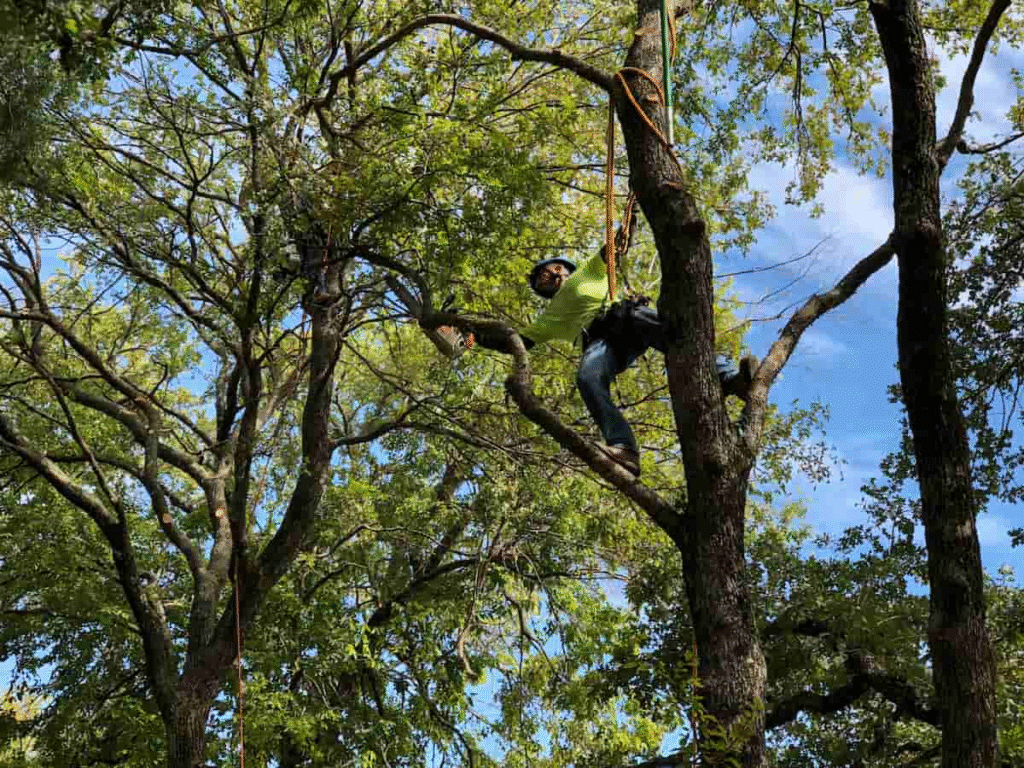
When to Call a Professional
While some small tree trimming or removal projects might seem manageable as DIY tasks, professional arborists bring expertise, equipment, and insurance that protect both your property and your liability.
Consider hiring a professional tree service when:
- The tree is near power lines, structures, or other valuable property
- The tree is large (over 20 feet tall)
- The tree appears unstable or partially dead
- The removal requires climbing or specialized equipment
- You’re uncertain about local permit requirements
- The tree may contain wildlife habitat that requires special consideration
When selecting a tree service, look for:
- ISA Certification (International Society of Arboriculture)
- Proper insurance (both liability and workers’ compensation)
- Local business licenses
- Good reviews and references
- Written estimates that clearly outline all services included
- Knowledge about local tree ordinances and permit requirements
Conclusion
Tree removal in the United States involves navigating a complex landscape of regulations, permit requirements, and costs. By understanding the laws that apply to your property, following proper application procedures, and budgeting appropriately for removal services, you can manage your landscape while staying compliant with legal requirements.
Remember that trees provide significant environmental, aesthetic, and property value benefits. Before removing any tree, consider whether pruning or other care might address your concerns while preserving these valuable natural assets. When removal is necessary, planning for appropriate replacement plantings helps sustain the urban forest for future generations.
For the most current information about tree removal regulations in your area, contact your local urban forestry department or visit the USDA Forest Service’s Urban and Community Forestry program website at https://www.fs.usda.gov/managing-land/urban-forests/ucf.

